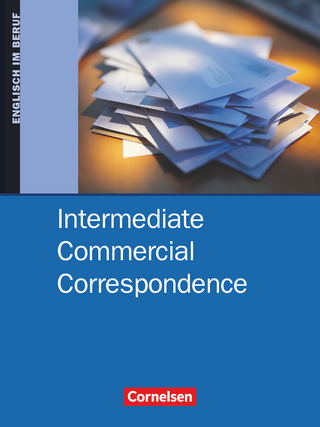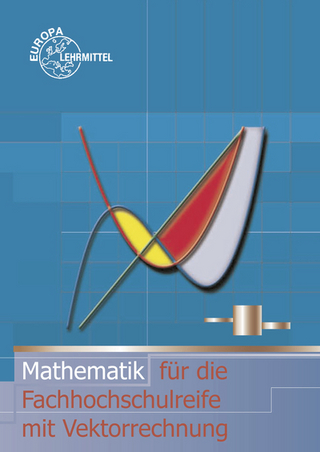
Designing for the Circular Economy
Routledge (Verlag)
978-1-138-08101-7 (ISBN)
The thirty-four chapters provide a comprehensive overview of issues related to product circularity from policy through to design and development. Chapters are designed to be easy to digest and include numerous examples. An important feature of the book is the case studies section that covers a diverse range of topics related to CE, business models and design and development in sectors ranging from construction to retail, clothing, technology and manufacturing.
Designing for the Circular Economy will inform and educate any companies seeking to move their business models towards these emerging models of sustainability; organizations already working in the circular economy can benchmark their current activities and draw inspiration from new applications and an understanding of the changing social and political context. This book will appeal to both academia and business with an interest in CE issues related to products, innovation and new business models.
Martin Charter has worked as a manager and trainer on sustainable innovation and product sustainability for 30 years in academia, business and consultancy. He is the founding Director of The Centre for Sustainable Design ® at UCA and is the author or co-author of Greener Marketing 1 & 2, Sustainable Solutions and System Innovation for Sustainability.
About the Editor, About the Contributors, Chapter 1 – Introduction, Charter, Chapter 2 – Circular Industrial Economy, Stahel, Chapter 3 - Circular Economy Innovation and Design: Setting the Scene, Charter, Chapter 4 - Framing circularity at an organisational level, Cumming, Chapter 5 - Circular Economy Policy, Benoy and Lehne, Chapter 6 - Why Asia Matters: Circular Economy in Japan, China and Taiwan, Cheng, Chapter 7 - Circular businesses: benefits, approaches, and challenges, Burgon and Wentworth, Chapter 8 - Circular thinking in design: reflections over 25 years’ experience, O’Connor, Chapter 9 - Business Models for a Circular Economy, Charter and McLanaghan, Chapter 10 - Designing Product/Service-Systems for a Circular Economy, McAloone and Pigosso, Chapter 11 - Key issues when Designing Solutions For a Circular Economy, Lindahl, Chapter 12 - Laser Printing and the Circular Economy: Kyocera challenges the status quo, Parker, Chapter 13 - Circularity Thinking: Systems thinking for circular product and business model (re)design: Identifying waste flows and redireting them for value creation and capture, Blomsma and Brennan, Chapter 14 - Design for Product Integrity in a Circular Economy, Bakker, Balkenende and Poppelaars, Chapter 15 - Thinking Life Cycle in a Circular Economy, Brimacombe, Chapter 16 - Design for Resource Value (DfRV), Stevels, Chapter 17 - Circular Textile Design: Old Myths and New Models, Earley and Goldworthy, Chapter 18 - Circular Economy and Design for Remanufacturing, Sundin, Chapter 19 - Repair Cafes: Potential implications for product design and development, Keiller and Charter, Chapter 20 - Dislocated Temporalities: Valuing difference and working together, Chapman and Chalaris, Chapter 21 - Design for a Circular Economy (CE) in Industry 4.0, Hunt, Chapter 22 - 3D Printing: Revolutionising the Way We Repair Things, Terzioglu, Chapter 23 - Exploring circular design opportunities for Wearable Technology , Prahl, Chapter 24 - Makerspaces as free experimental zones, Kohtala, Chapter 25 - Repair Cafes: Circular and Social Innovation, Charter and Keiller, Chapter 26 - Delivering a more Circular Economy for Electrical Goods in Retail in the UK, Hilton, Chapter 27 - Accelerating the circular economy @ HP, McIntyre, Chapter 28 - iFixit: A Case Study in Repair, Wiens, Chapter 29 - Lessons Learned from Practice when Developing a Circular Business Model, Vildåsen , Chapter 30 - Interface: Net-Works – lessons learnt turning nets into carpet, Khoo, Chapter 31 - ‘Who is mining the Anthropocene?’, Baker-Brown, Chapter 32 - Reversible Building Design, Durmisevic, Chapter 33 - Design and the Circular Economy in the UK Blinds and Shutter Industry, Andrews, Grussa, Chalk and Bush., Chapter 34 - Circularity information management for buildings: the example of Materials Passports, Luscuere and Mulhall, Index.
| Erscheinungsdatum | 21.09.2018 |
|---|---|
| Zusatzinfo | 8 Tables, black and white; 59 Line drawings, black and white; 24 Halftones, black and white |
| Verlagsort | London |
| Sprache | englisch |
| Maße | 156 x 234 mm |
| Gewicht | 1400 g |
| Themenwelt | Technik ► Umwelttechnik / Biotechnologie |
| Wirtschaft ► Betriebswirtschaft / Management ► Marketing / Vertrieb | |
| Wirtschaft ► Betriebswirtschaft / Management ► Unternehmensführung / Management | |
| ISBN-10 | 1-138-08101-9 / 1138081019 |
| ISBN-13 | 978-1-138-08101-7 / 9781138081017 |
| Zustand | Neuware |
| Informationen gemäß Produktsicherheitsverordnung (GPSR) | |
| Haben Sie eine Frage zum Produkt? |
aus dem Bereich



